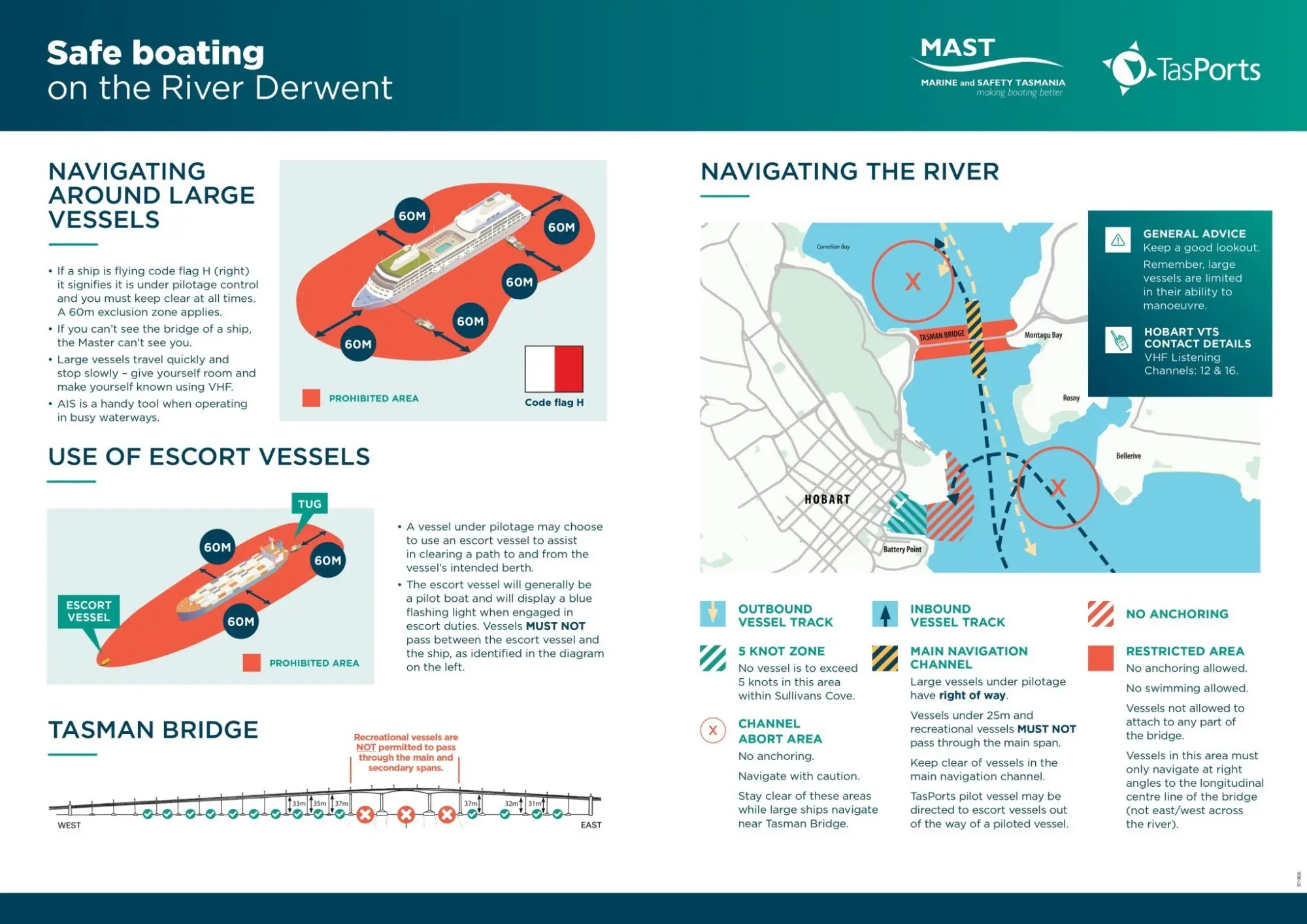Safe boating on the River Derwent
TasPorts has worked with MAST to develop an infographic promoting safe boating on the River Derwent.
Posted
08 March 2024
TasPorts has worked with MAST to develop an infographic promoting safe boating on the River Derwent.
Posted
08 March 2024
More than 2,500 large commercial vessels visit our shores each year, moving approximately 15 million tonnes of freight through our multi-port system.
After a busy summer, TasPorts still sees high vessel movements around our ports.
TasPorts has worked with MAST to develop an infographic promoting safe boating on the River Derwent to remind port users of their responsibilities while navigating the river and around large vessels.
Before heading out on the water
Here are some top safety tips to follow before even stepping foot on your vessel or watercraft:
For more great water safety tips, visit www.mast.tas.gov.au
Navigating around large vessels
At our major ports across Tasmania, large vessels are constantly coming and going. When you are planning to head out on the water this summer, please be aware of the following simple rules and responsibilities for all recreational vessels and watercraft:
Exclusion zones and recreational vessels
Did you know that our ports have a minimum 50-metre exclusion zone, applying to tankers and passenger ships?
This exclusion zone applies to all recreational vessels, including paddle craft, at all times and has been implemented to comply with Federal Government security requirements.
By following these tips, you can help ensure that everyone has a safe and enjoyable experience on the water this summer.
